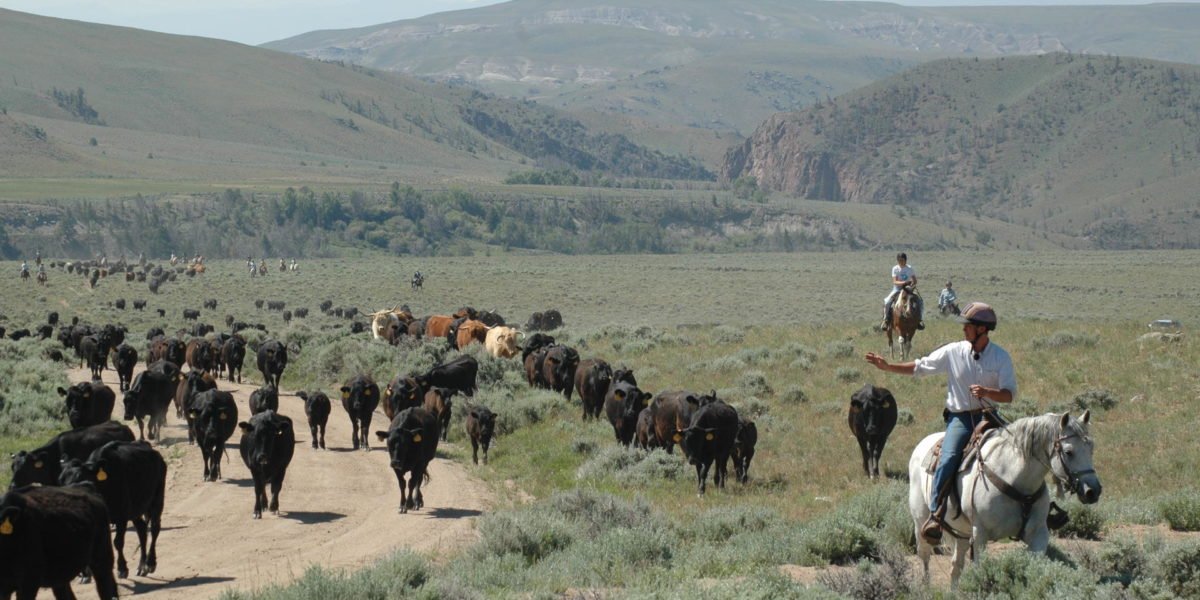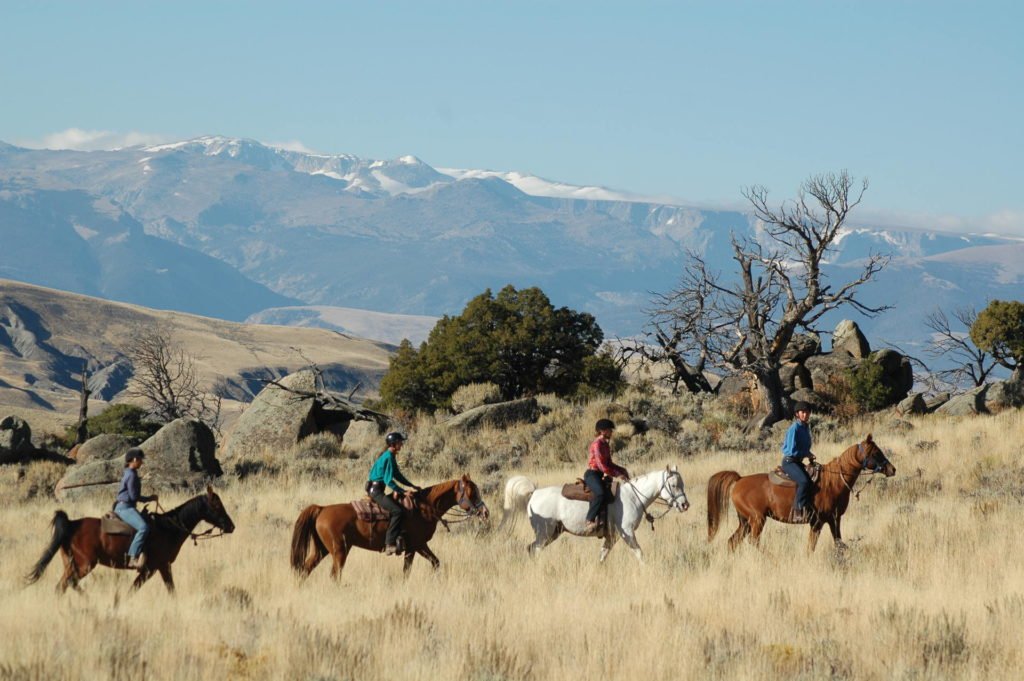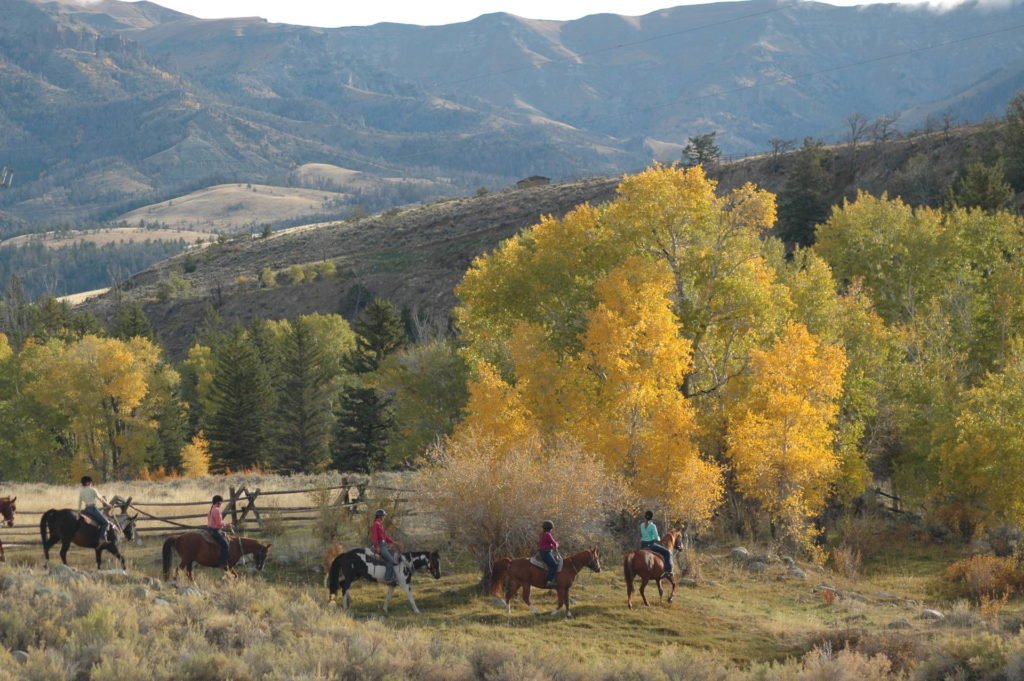
Life on the ranch
The incredible Bitterroot Ranch in Wyoming is one of our favorite places. We caught up with Richard Fox, son of Bayard Fox who has operated Bitterroot since 1971, to get his take on the life of a rancher in the 21st century.
How did you come to be a rancher in Wyoming?
To be honest, I was born into it. I grew up on the ranch and this has been my life since the beginning. I went away to boarding school in California and then college on the east coast, as well as a spell running riding safaris in Kenya.
Did you think about moving away more permanently?
I consider myself really lucky to have had the option to move back to Wyoming. Pursuing a life in agriculture is not easy for a young person. You need so much capital to get started that unless you are in a position where you can join the family business, it’s hard to get started on your own. The town I grew up in, Dubois, has few sources of income other than tourism and agriculture, and tourism only lasts half the year. Most of my peers who wanted to start careers had little choice but to leave. So yes, I feel really lucky to have been able to experience life outside of Wyoming but then have the opportunity to come back.
So ranching in Wyoming is a hard business to be in?
It’s difficult. Bitterroot Ranch is a gem but if we were to sell it, the value of the land is in no way connected to its agricultural value. It’s purely recreational. So it’s really difficult nowadays to grow a ranch that is being operated on a purely agricultural basis. Many of the ranches are now owned by absentee landlords most of whom value the land for the landscape and wildlife. To them the idea of running a traditional cattle ranch would just be an aggravation. Unless you love the lifestyle, ranching is a lunatic business to be in.
Well you could always sit behind a desk all day…
It gives me tremors just thinking about it! But ranching can be tough and you can get stuck in a rut. But having guests here and being able to experience the ranch through their eyes, to see how different and liberating it is to them, breathes new life into my attitude.

You have guests from all over the world. What are they usually most surprised about during their time at Bitterroot?
I think it’s the space here. You can ride all day and see no evidence of human presence. You can look out over a landscape and see no roads, let alone traffic jams and power lines.
Another thing we hear frequently concerns the riding itself. Many guests have only ever ridden in a ring or in a very controlled way. When you’re herding cattle on horseback the focus suddenly becomes the cattle not the horse. Guests find themselves riding in a much more natural, subconscious way and rather than forcing the experience – they allow their body to work with the horse.
You said you have spent some time riding in Kenya. How do you think Wyoming compares to an incredible place like Kenya?
It’s the wilderness here and the ability to get away from it all. I think it is truly unique. We run some pack trips where we will ride out from the ranch for a full week. You can easily go for a full week and not see another human. Beside the odd grizzly bear or wolf pack, you’re on your own. These trips really appeal to some of our more well travelled clients.
You mentioned that you only spend the summer at Bitterroot.
Yes, Bitterroot is considerably higher and gets much more snow. So each winter my family and I move down to the lower ranch, about ninety miles from Bitterroot. It’s the same seasonal movement that has always happened in the west and indeed across the world. We used to drive the cattle on horseback all the way down but the route crosses an Indian reservation that we are no longer able to travel through.

Life at Bitterroot Ranch changes with the seasons
What’s the name of the local tribe?
There are two, the Shoshone and the Arapaho. The Shoshone actually made peace with the US government fairly early on in the colonization of the West and as a result were given a good reservation in terms of size and resources relative to some others. The Arapaho were more rebellious and it was only at a later date that they came into the reservation fold. The initial plan was for them to spend the winter on the same reservation as the Shoshone and then they would be given their own in the spring. That was over 100 years ago and they are still together. The two tribes were sworn enemies, so it is a contentious issue.
And do horses play an important part of their culture?
It obviously depends on the individual but there are some great horsemen and women on the reservation. Rodeo is also very popular among tribal members and I’d say that they make up the majority of the competitors at the local rodeo in Dubois. The young children may barrel race, the older brother will be bull riding and the grandfather team roping. It’s a very family oriented affair.
One of the greatest things I have ever seen was 3 year old children riding sheep at a rodeo in Montana.
Mutton busting! Our British guests always say that if that were to happen in the UK, the authorities would probably descend and start confiscating children!
Thanks Richard!
Sample itinerary: Yellowstone and Grand Teton Road Trip
